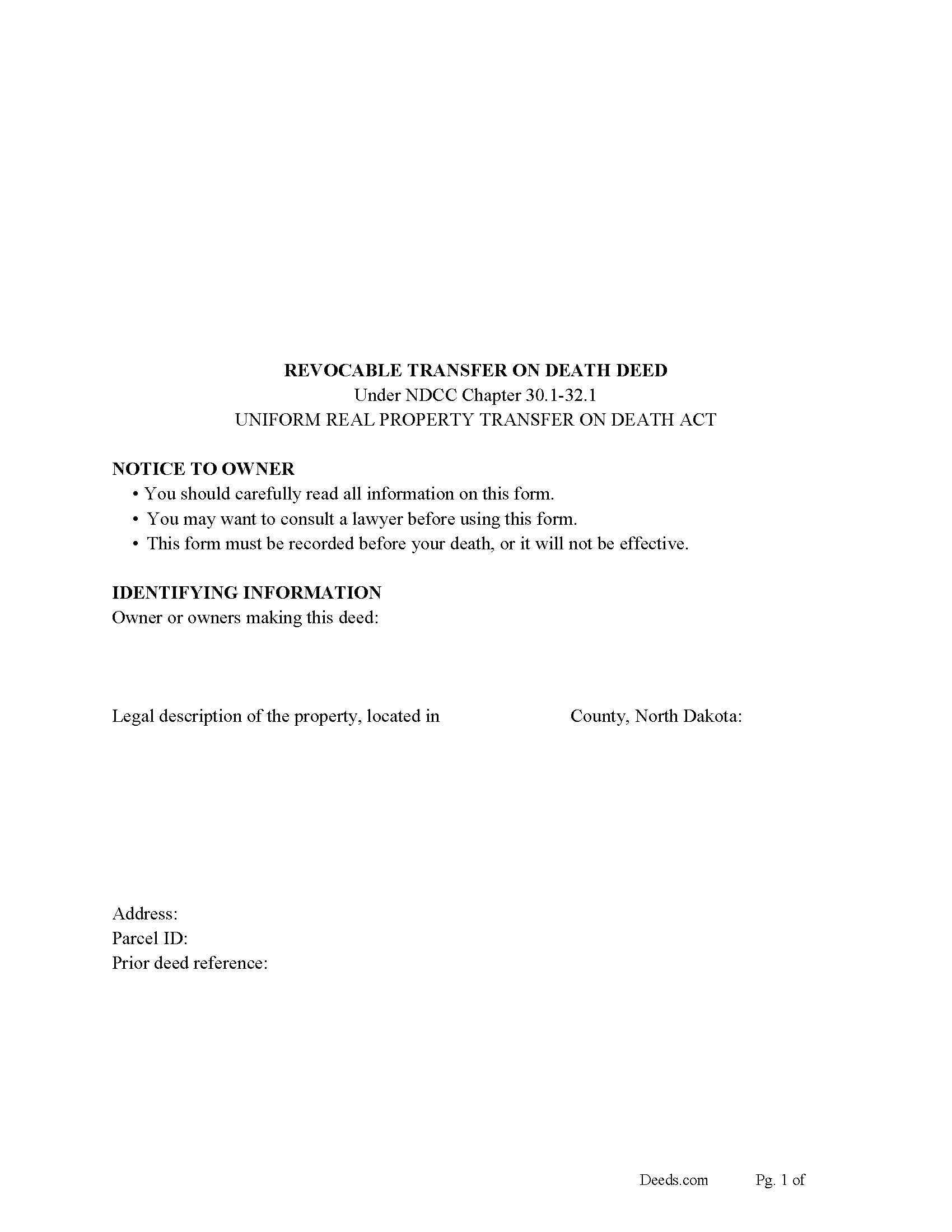Download North Dakota Transfer of Death Deed Legal Forms

North Dakota Transfer of Death Deed Overview

Note that transfer on death deeds must be recorded during the owner's life or they have no effect.
In 2011, North Dakota enacted the Uniform Real Property Transfer on Death Act, found in the North Dakota Century Code (NDCC) at Chapter 30.1-32.1.
According to this statute, owners of North Dakota real property may transfer property to one or more beneficiaries effective, at the transferor's death, by lawfully executing and recording a transfer on death deed in the county or counties where the property is located (NDCC 32.1-02). The instruments must contain all the information required for traditional deeds, as well as a statement that the transfer will occur at the owner's death (30.1-32.1-06).
This transfer is nontestamentary, meaning it is not included in the owner's will (30.1-32.1-04). As a result, it does not require probate distribution. Even so, best practices dictate that the will and any other transfers should not contain any conflicting instructions.
Deeds under this law allow the owners to retain absolute ownership of and control over the land until death, including the ability to cancel or change the beneficiary designation, and to sell the property outright to someone else (30.1-32.1-09). Because the transfer is revocable (30.1-32.1-03), there is no obligation to notify the beneficiary or to collect consideration (money) for the potential future interest (30.1-32.1-07).
When the transferor dies, the beneficiary gains ownership of the property with no warranties of title, and subject to any mortgages, encumbrances, and agreements in place during the owner's life. (30.1-32.1-10).
Overall, transfer on death deeds are a convenient, flexible tool for a comprehensive estate plan.
(North Dakota TODD Package includes form, guidelines, and completed example)